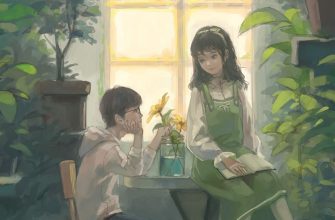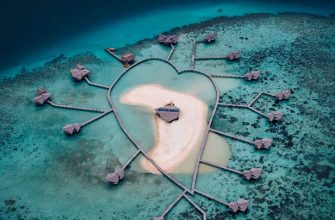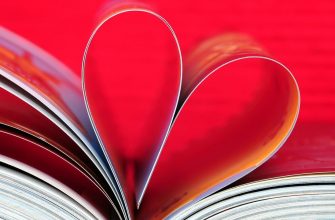Парк Победы
Парк Победы является значимым мемориальным комплексом, посвященным победе в Великой Отечественной войне. Он расположен в северной части Уфы рядом с рекой Белая и был открыт практически сразу после окончания войны – в 1947 году. Изначально он существовал для развлечений: на его территории находился парк аттракционов с каруселями и колесом обозрения, танцевальная площадка, а также несколько территорий для игр детей.
Значимые места в парке Победы
В 1980-х годах парк получил важное историческое значение – в нем стали располагаться памятники героям СССР, модели военной техники, а также музеи, посвященные военному периоду. Именно тогда он получил свое современное название (до этого он назывался «Нефтяник»). Так, в парке можно увидеть:
Отдельно следует отметить могилу Мусы Гареева, которая появилась в парке в 1987 году. Он был советским летчиком и дважды признавался героем СССР. За время войны он совершил более 250 вылетов.
Кроме того, вдоль центральной аллеи на стелах, которые призваны символизировать знамена, высечены имена почти 300 героев СССР, а также названия районов республики и количеством мобилизованных и погибших на войне солдат.
Интересные сведения о парке
Парк является не только местом исторического значения. Он также является сосредоточение культурной жизни города. Так, здесь традиционно проводятся народные гуляния. Чаще всего сюда приезжают молодожены, а также школьники в период последних звонков и выпускных. Территория парка озеленена, и потому очень живописна.
Для местных жителей и туристов, приезжающих зимой, парк привлекателен тем, что в нем есть горнолыжная трасса. Она достаточно небольшая, но хорошо обустроенная. Также парк выполняет свою функцию как мемориала и проводит патриотические акции. Чаще всего они проходят в период годовщин Победы.
Интересно, что в 2014 году в Уфу доставили рубку подводной лодки, которая должна стать частью мемориального комплекса в парке Победы. Он будет служить памятью морякам из республики Башкортостан, которые погибли в военное и мирное время. На сегодняшний день это единственная подобная рубка, оставшаяся на территории бывшего Советского Союза. Ее вес составляет 18 тонн (в боевом состоянии он увеличивается в 2 раза).
Сам мемориальный комплекс начал закладываться еще в 2012 году. Помимо рубки, там будет памятная доска, в которой будет вмонтирована лопасть торпеды атомной подлодки «Курск», а также бюст Петра I. Парк играет значимую роль как дань памяти всем, кто победил в войне 1941-1945 гг. От парка Победы можно спуститься к реке Белая с помощью лестницы.
Тема Уфа на английском языке: достопримечательности, рассказ о городе
Ufa is the capital [кэпитал] of Bashkortostan Republic [рипаблик] and one of the biggest economical centres [сентрэс] of Ural area [эрия]. – Уфа – это столица республики Башкортостан и один из самых крупных экономических центров Уральской области.
It is situated [ситуэйтид]on the river White [уайт] – Город расположен на реке Белая.
Ufa has a population about 1.5 million people [Уфа хэз э популэйшн эбаут уан энд э халф миллион пипл] – Население Уфы составляет около 1,5 миллионов людей.
About 50% of that people are Russian, others are Bashkirs, Tatars and other nationalities [эбаут фифти персент оф зэт пипл а рашн, азэс а башкирс, татарс энд азэ нэшионэлитис] – Примерно 50% этих людей русские, остальные башкиры, татары и других национальностей.
Ufa’s climat [клаймэт] has special features [фичерс]: summers are very hot, winters are very cold – Климат Уфы имеет определенные черты: очень жаркое лето и очень холодная зима.
Ufa is famous of its sights [Уфа из фэймос оф итс сайтс] – Уфа известна своими достопримечательностями.
One of them is mosque Lyalya-Tulip [моск ляля-тьюлип]. It is so cold because of its minarets’ roof [минэрэтс руф]. Minarets are built in form of a tulip and is 53 metres high [фифти сри мэтэс хай]. – Одной из них является мечеть Ляля-Тюльпан. Она названа так из-за крыши минаретов. Они построены в форме тюльпана и имееют высоту 53 метра.
Buildings of Country land bank (it is built in 1906) and Officers’ House [офисиерс] (it is open in 1904) are examples of traditions of the Russian architecture [акитекче]. –
Здания Крестьянского поземельного банка (построены в 1906 году) и Дом офицеров (открыт в 1904 году) являются образцами традиций русской архитектуры.
Bashkir academic theater [сиэтэ] is other Ufa’s sight.Bilding has both [бос] west and russian architecture features.All statements [стэйтментс] are only in Bashkir language [лэнгуич] – Башкирский академический театр – еще одна достопримечательность Уфы. Здание включает как восточные так и русские архитектурные черты. Все постановки идут только на баркирском языке.
Also there are other beautiful places to visit such as Opera and ballet theatre, Friendship memorial [фрэндшип мимориал], Botanical garden [ботэникал гадэн] and a lot of museums [мьюзиэмс] in Ufa. – Также в Уфк много других красивых достопримечательностей таких как Театр оперы и балета, мемориал дружбы, ботанический сад и различные музеи.
Victory Park
KEY FACTS
Victory Park Russian: Park Pobedy or Парк Победы on Poklonnaya Hill Russian: Poklonnaya gora or Поклонная гора is a tribute to the memory of soldiers who fought in World War II, and the victory that was bought so dearly by Soviet people. Moscow suffered a lot in 1941–1945: hunger, aerial attacks, and daily back-breaking labour. Hundreds of thousands of Muscovites died during those black years. The victims of that dreadful war are commemorated in the colossal sculptures, the Central Museum of the Great Patriotic War Russian: Tsentralnyi muzey Velikoy Otechestvennoy voyny or Центральный музей Великой Отечественной войны with its collection of military equipment, memorial avenues and religious objects in Victory Park. Picturesque greenery makes the park a wonderful place for a walk, and the wide avenues and paths make it Moscow’s rollerblading stomping ground.
Concerts, festivals and firework displays are held on Poklonnaya Hill on holidays. Yet, the most important date is the 9th of May, Victory Day, on which the hill gets crowded. People lay flowers at the foot of memorials, enjoy performances by Russia’s best artists, and look forward to seeing the fireworks which signify the climax of this public holiday.
Origin
The idea to establish a huge memorial on the hill to commemorate the heroic deeds of the Soviet people was born even before the end of World War II. A sign reading, ‘A monument to the Victory of the Soviet people in the Great Patriotic War of 1941–1945 is going to be erected here’, appeared on Poklonnaya Hill in 1958. Plans to reconstruct the park were underway the same year; trees were planted and avenues were re-designed. However, it was not until 1984 that the construction of the memorial on the hill began. The designers were ambitious in their goal to tell the entire history of war through the use of architectural elements, in so doing creating a memorial to all those who fought the enemy for the common goal.
Even if you are in a beautiful historic area or a tidy park, walking around the huge city takes up a lot of energy. For you to have a rest in the best way, on the pages of our website there is a lot of information about places to eat in Moscow.
War and peace

The central part of the park has a regular geometric shape, manicured lawns and flower beds. However, if you walk a little away from the main avenues, you will enter a ‘wilder’ part of the park where you can walk under the trees or ride a bike or rollerblade on the slopes.
Monuments and museums in Victory Park
If you keep walking along Memory Avenue, you will reach a synagogue. Its permanent exhibition is dedicated first of all to the victims of the Holocaust and also to the history of Jewish people in Russia.
An Orthodox church consecrated to St. George, a patron saint of the military, is located across the central square. The nearby monument is called ‘To the Missing Soldiers without Graves’. It depicts a fatally wounded foot soldier with his knees half bent, who is about to fall. There is nothing like pathos or solemnity in this monument, rather, it simply reminds us of the cruelty of war and the millions of individual tragedies.
The central Wartime Avenue Russian: ‘Gody Voyny’ or «Годы войны» with memorial steles commemorating various fronts and fleets leads to Park Pobedy metro station. The avenue offers an incredible perspective of the monuments. Its five terraces refer to each of the five years of war, and its 225 fountains indicate the duration of the war in weeks.
Ufa city, Russia
Ufa overview
Ufa is one of the biggest cities in Russia, the capital of Bashkortostan Republic. It is one of the largest economic, cultural, sports, religious, and scientific centers of the country, an important transport hub, located about 1,340 km southeast of Moscow.
Ufa city flag
Ufa city coat of arms
Ufa city map, Russia
Ufa city latest news and posts from our blog:
Ufa history
In 1557, the area inhabited by the Bashkirs became part of Grand Principality of Moscow. In 1574, on the orders of the Russian Tsar Ivan IV, a fortress was founded on the site of present Ufa. In 1586, the settlement became a town.
The original name of the settlement was Tura-Tau, after the name of the hill it was standing on. The present name “Ufa” means “small” in the Turkic language; this name was used by local people. Later, it became the official name of the town.
In the middle of the 17th century, the town got its emblem with an image of a running marten. At that time, the population of Ufa together with the garrison was about 1,500 people.
In the 17th-18th centuries, Ufa gradually turned into an administrative and economic center of the region. In the 18th century, the town also became a large trading and cultural center of the Russian Empire.
In the middle of the 19th century, there were more than a dozen tanneries and other factories in Ufa. The town received further impetus to its development due to the following events. In 1870, the regular navigation was opened on the Belaya River. In 1888-1892, the Samara-Zlatoust (Kuibyshev) Railway was constructed.
Rail and ship-repair workshops, sawmills, steam mills appeared in Ufa. By the end of the 19th century, there were about 30 factories in the town. In 1922, Ufa became the capital of Bashkir Autonomous Soviet Socialist Republic. In the 1920s-1930s, the city experienced rapid development, industrial production increased by several times.
During the Second World War, dozens of industrial enterprises from the western regions of the USSR were evacuated to Ufa. After the discovery of oil in Bashkiria, this city became a large center of oil production and refining.
In 2015, Ufa hosted a summit of the Shanghai Cooperation Organization and BRICS.
Ufa streets
On the street in Ufa
Author: Denis Shokhov
Apartment house in Ufa
Author: Gennady Ionov
Modern architecture in Ufa
Author: Egor Mihtanuk
Features of Ufa
This city, located at the confluence of the Ufa and Belaya rivers, is one of the largest industrial centers in Russia. The local economy is based on the fuel and energy, machine-building enterprises.
Ufa is a large transport hub of Russia. The Trans-Siberian Railway runs through the city. Ufa International Airport offers regular flights to Yekaterinburg, Izhevsk, Irkutsk, Kazan, Moscow, Novosibirsk, Omsk, Perm, St. Petersburg, Barcelona, Beijing, Istanbul and a number of others.
It is also the only city connected with Moscow by two federal highways. The southern outskirts of the city is crossed by the highway M5 “Ural” and the federal highway M7 “Volga” ends here. Urban transport is represented by trams, trolleybuses, buses, minibuses, taxis.
Places of interest in Ufa
The oldest surviving building in Ufa is a one-storey house located at October Revolution Street, 57/1. It belonged to Demidov, a famous owner of mines and metallurgical plants. The building was constructed in the mid-18th century. It is also famous because a great Russian commander Alexander Vasilyevich Suvorov stayed in it.
The central office of the financial corporation “Uralsib” (Revolyutsionnaya Street, 41) is the tallest building in Ufa (100.5 meters).
The first large mosque in the city was constructed at Tukai Street in 1830.
In the outskirts of the city there is a system of 20 natural caves formed as a result of mining of gypsum.
Ufa museums and galleries
Ufa theaters and other cultural institutions
Ufa city of Russia photos
Ufa places
Holy Cross Church in Ufa
Author: Cherepanov Timofey
Winter in the park in Ufa
Author: Korotnev A.V.
Ufa Television Center
Author: Vladimir Konstantinov
Ufa views
Museum of Archaeology and Ethnography in Ufa
Author: Egor Mihtanuk
Lenin monument in Ufa
Monument to Salavat Yulaev in Ufa
Author: Cherepanov Timofey
The questions of our visitors
The comments of our visitors
Feedback:
Rating: 3.2/5 (144 votes cast)
Сочинение Victory Day на английском с переводом
Нет времени? Сохрани в
С каждым годом по всему миру всё меньше и меньше остается ветеранов Второй мировой войны, все меньше тех, которые ценой невероятных усилий отстояли право своего народа на жизнь и благодаря которым живем сейчас мы. Людская природа враждебна, и нам остается только надеяться, что новая война не произойдет. Захватчики давно уничтожены, и победа одержана, но кто знает, может быть это была всего лишь битва? Ведь настоящая победа — не уничтожить врага, а закопать топор войны.
Essay on Victory Day
One of the most remarkable public events in Russia is the Victory Day. It is traditionally celebrated on the 9th of May. The holiday marks the capitulation of Nazi Germany to the Soviet Union in the Second World War in 1945. It became the end of the Great Patriotic War for the USSR, which lost about 25 million citizens in the four years of fighting and starvation.
Every year all cities across the country have lots of parades and celebrations. Even though the fact that the holiday is celebrated cheerfully, May 9 is a sad day for the majority of our population. Many people have lost close relatives and friends in this terrible war. Almost every family in Russia has a person who didn’t return from the battlefield. A great number of people were seriously injured and became disabled. On this day we are grateful to our saviors, to those who sacrificed their lives for us. That’s why we try to celebrate this day with honors.
There are some traditions that we follow. We give flowers, usually red carnations, to veterans in the street and lay wreaths at war memorial sites. Neighborhood schools may host a program prepared by the students, featuring wartime songs and poetry. Also, there is St. George ribbon campaign, which has occurred on the eve of the Victory Day for nine years already. Millions of Russians and compatriots in 100 countries take part in this campaign. Orange–black ribbons handed out by volunteers in the streets are one more sign of our commemoration of the Great Victory. At home, we gather around a festive table to honor survivors and honor those who passed away. We may also watch a favorite Soviet film based on the events of World War II.
I think it’s a great day in our history, but some part of the younger generation doesn’t understand the importance of this event, which I think is disrespectful. My grandparents took part in this war, and I’m proud of them.
Как быстро подготовиться к ЗНО по английскому
Сочинение на тему День Победы
Одним из самых запоминающихся государственных праздников в России является День Победы. Он традиционно отмечается 9 мая. Этот праздник знаменует сдачу Германии Советскому Союзу во Второй Мировой войне в 1945 году. Это стало окончанием Великой Отечественной войны для СССР, в результате чего за четыре года боевых действий и голода погибло около 25 миллионов граждан.
Ежегодно во всех городах по всей стране проходят парады и торжества. Несмотря на то, что праздник празднуется весело, 9 Мая – это печальный день для большей части нашего населения. Многие люди потеряли близких родственников и друзей в этой ужасной войне. Почти у каждой семьи в России есть человек, который не вернулся с поля битвы. Большое количество людей получили серьезные ранения и стали инвалидами. В этот день мы благодарны нашим спасителям, тем, кто жертвовал своей жизнью за нас. Вот почему мы стараемся отмечать этот день с почестями.
Есть некоторые традиции, которых мы придерживаемся. Мы дарим цветы, как правило, красные гвоздики, ветеранам на улице и возлагаем венки на военных мемориалах. В соседних школах может быть организована программа, подготовленная школьниками, с участием песен военного времени и поэзии. Кроме того, существует кампания лент Св. Георгия, которая появилась накануне Дня победы 9 лет назад. Миллионы россиян и соотечественников в 100 странах принимают участие в кампании. Оранжево-черные ленты, раздаваемые добровольцами на улицах, являются еще одним знаком нашего празднования Великой Победы. Дома мы собираемся вокруг праздничного стола, чтобы почтить выживших и вспомнить тех, кто скончался. Мы также можем посмотреть любимый советский фильм, основанный на событиях Второй мировой войны.
Я думаю, что это замечательный день в нашей истории, но часть молодого поколения не понимает всю важность этого события, что, как я думаю, неуважительно. Мои бабушки и дедушки принимали участие в этой войне, и я горжусь ими.

























